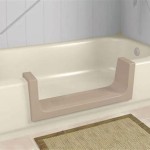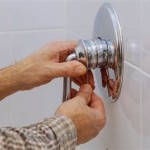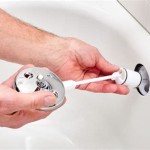Bathtub Floor Molding: An Essential Guide
Bathtub floor molding, often overlooked yet crucial for a well-finished bathroom, serves multiple essential functions. It not only enhances the aesthetics of your bathroom but also prevents water damage, improves hygiene, and ensures a leak-free bathtub installation. Understanding the different types, materials, and installation techniques for bathtub floor molding is paramount for homeowners and professionals alike.
Choosing the Right Bathtub Floor Molding
Various types of bathtub floor molding are available, each with its unique advantages. Common options include:
- Quarter-round molding: A classic and versatile option, quarter-round molding offers a smooth transition between the bathtub and the floor.
- Base shoe molding: Wider than quarter-round molding, base shoe molding provides additional coverage and can help hide imperfections.
- Pencil molding: A thin and narrow molding, pencil molding is ideal for creating a subtle and elegant transition.
When selecting bathtub floor molding, consider the style of your bathroom, the material of your flooring, and the size of the gap between the tub and the floor.
Molding Materials: Durability and Aesthetics
Bathtub floor molding is typically available in various materials, each with its distinct characteristics:
- Plastic: Cost-effective, easy to install, and available in a wide range of colors and finishes.
- Ceramic: Durable, waterproof, and resistant to mold and mildew.
- Metal: Strong, durable, and available in different finishes like brushed nickel, polished chrome, or matte black.
- Wood: Classic and elegant, wood molding can add warmth and character to a bathroom.
Choose the material that best complements your bathroom design and meets your desired level of durability.
Installation Considerations: Ensuring a Watertight Seal
Proper installation of bathtub floor molding is crucial for preventing water damage. Here are some key considerations:
- Measure and cut: Accurately measure the length of the molding and cut it to size using a miter saw or a utility knife.
- Apply adhesive: Apply a generous bead of adhesive to the back of the molding and press it firmly into place.
- Use caulk: Fill any gaps between the molding and the wall or floor with caulk to create a watertight seal.
Allow the adhesive and caulk to dry completely before using the bathtub.
Benefits of Bathtub Floor Molding
Installing bathtub floor molding offers numerous benefits for your bathroom:
- Water protection: Molding prevents water from seeping into the floor, reducing the risk of water damage.
- Hygienic: Eliminates gaps where dirt and mold can accumulate, making it easier to keep your bathroom clean.
- Finished look: Molding adds a polished and complete look to your bathroom, enhancing its overall aesthetics.
- Leak detection: If water accumulates under the molding, it can serve as an early warning sign of a leak.
Bathtub floor molding is an essential component for a well-functioning and aesthetically pleasing bathroom. By choosing the right type, material, and installation technique, you can ensure the longevity and beauty of your bathroom for years to come.

Quarter Round In Front Of Tub Bathroom Makeover Floor Molding Vinyl Flooring

Bathroom Makeover How To Add Decorative Molding A Bathtub Remodel Cost Budget Diy

How To Finish Vinyl Plank A Bathtub

Non Wood Quarter Round For Around The Tub And Shower Vinyl Plank Flooring Bathroom Installing Floor Trim

10 Bathroom Makeover Quick And Easy Bathtub Trim Hometalk

Closed The Gap Between Old Floor And New Tub With A Bit Of Plastic Door Sill Trim Should Stop Cold Basement Draft Molding Flooring Bathtub

Diy Tub Skirt Decorative Panel For A Standard Soaking

Vinyl Self Stick Tub Cove Moulding 60 M D Building S Inc

Bathroom Makeover How To Add Decorative Molding A Bathtub Remodel Bathrooms Tub

Diy Tub Skirt Decorative Panel For A Standard Soaking
Related Posts








